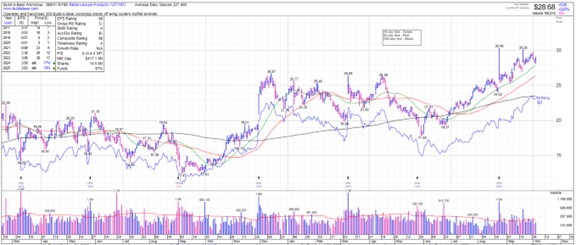Back in the early 90’s, Maxine Clark worked in merchandise development, planning, and research for May Department Stores. She then went on to become a president of Payless ShoeSource. One day she was shopping with a 10-year-old girl who suggested they make their own stuffed animals. A lightbulb went off. This is the story of Build-A-Bear Workshop (BBW), explains Tyler Laundon, editor of Cabot Small-Cap Confidential.
What if she designed a store that allowed people to make their own stuffies? In her own words, Clark said this about pitching the idea to the public: Adults told me my idea wouldn’t work. “Who wants to make their own stuffed animals?” they argued. But every kid said, “Where is it? When can I do it?”
"We knew we had a winner in our first year, when we achieved more than double our projected sales. In 2005, we opened our 200th store...” Two and a half decades after opening her first store in the Saint Louis Galleria mall in Missouri, Maxine Clark’s company has sold more than 225 million furry friends and has 50 million guests visiting over 500 locations every year.
Why does it work? Because as every parent knows, the correct number of stuffies a kid can have is always [n + 1].

Broadly speaking, the company offers a shopping and entertainment experience that spans the simple “click-to-buy” to “DIY” continuum, all focused on furry friends and comfort clothing (pajamas, etc.). One of the reasons the concept works is that people are always looking for a special, relatively low-commitment social activity with a lasting memory.
And in the grand scheme of things, a stuffed animal is just not that expensive, especially relative to the happiness they bring. Add in the ability to customize, hold a birthday party at a workshop location, or even gift pajamas, and it’s not hard to see why Build-A-Bear’s concept keeps customers coming back.
Build-A-Bear generates the bulk of revenue (95%) from direct-to-consumer retail sales (online and in-stores) in the US, Canada, Ireland, and the UK. About 4% comes from licensing and wholesale deals, and the last 1% comes from international franchising.
While around 15% of sales currently come online, this is still very much a physical shopping experience type business. Average dollars spent per transaction last year was $50.59.
In fiscal 2023, which ended in January 2023, revenue grew 13.7% to $468 million. EPS was $3.15. In the first half of the current fiscal year (fiscal 2024, which ends in January 2024) Build-A-Bear has grown revenue by 5% to $229 million and EPS by 24% to $1.57.
Second-quarter fiscal 2024 revenue grew 8.5% to $109.2 million and EPS grew 50% to $0.57. Looking forward, management has guided for full-year fiscal 2024 revenue to grow 5% to 7%. Analysts, of which there are not many, expect revenue to grow 6.4% ($498 million) and EPS to grow 15.2% to $3.63.
Recommended Action: Buy BBW




















